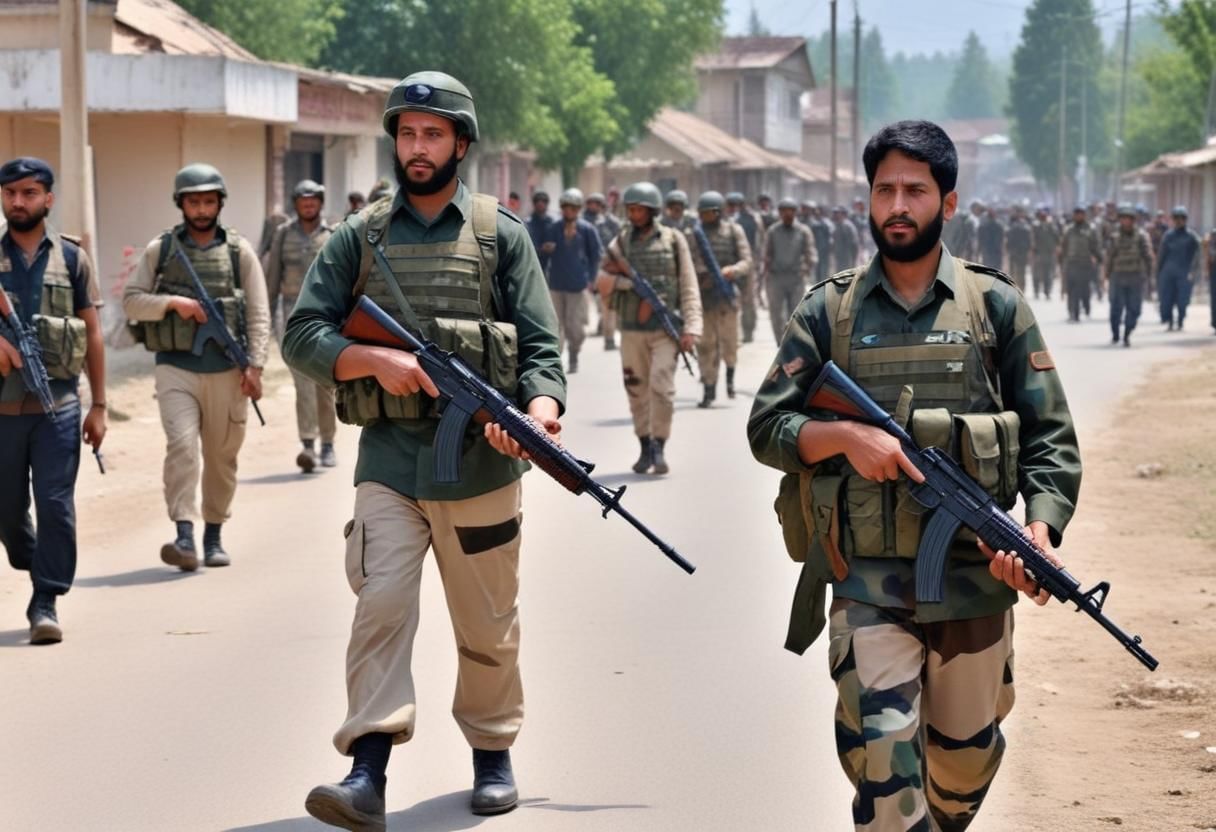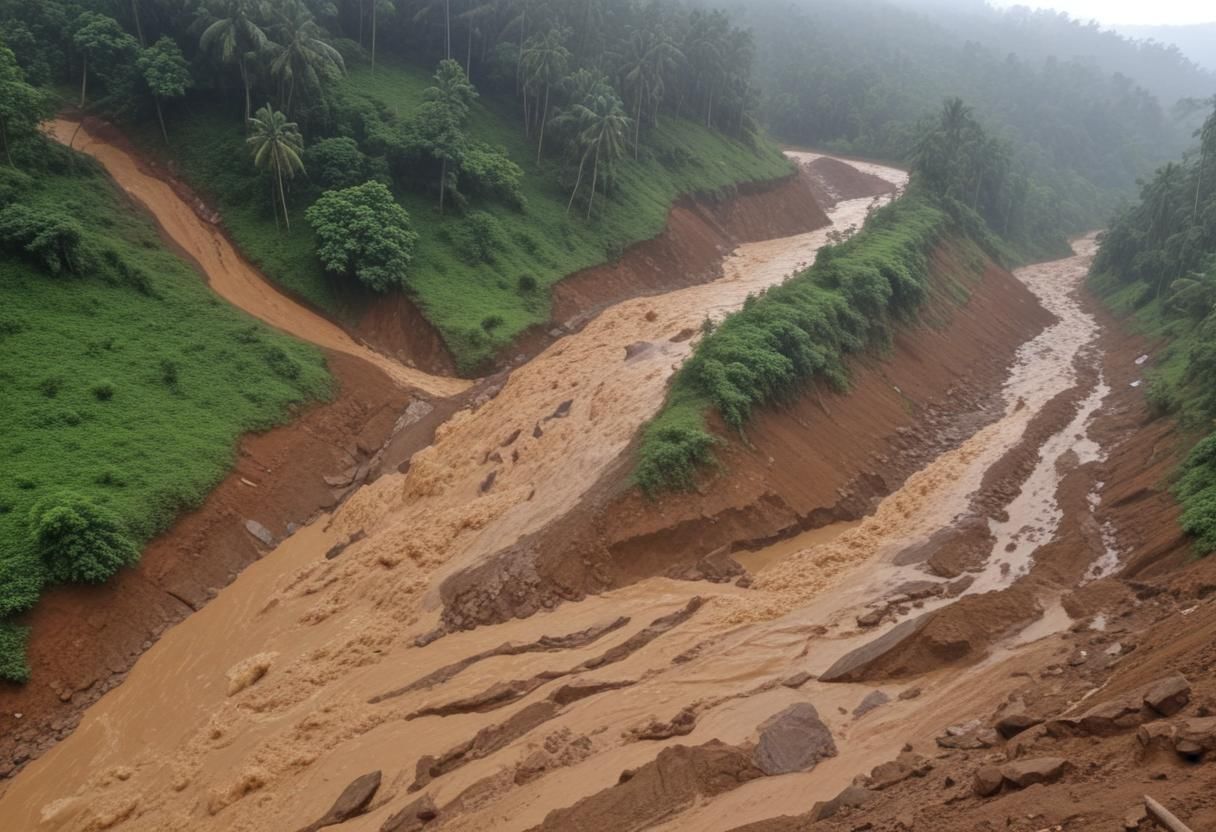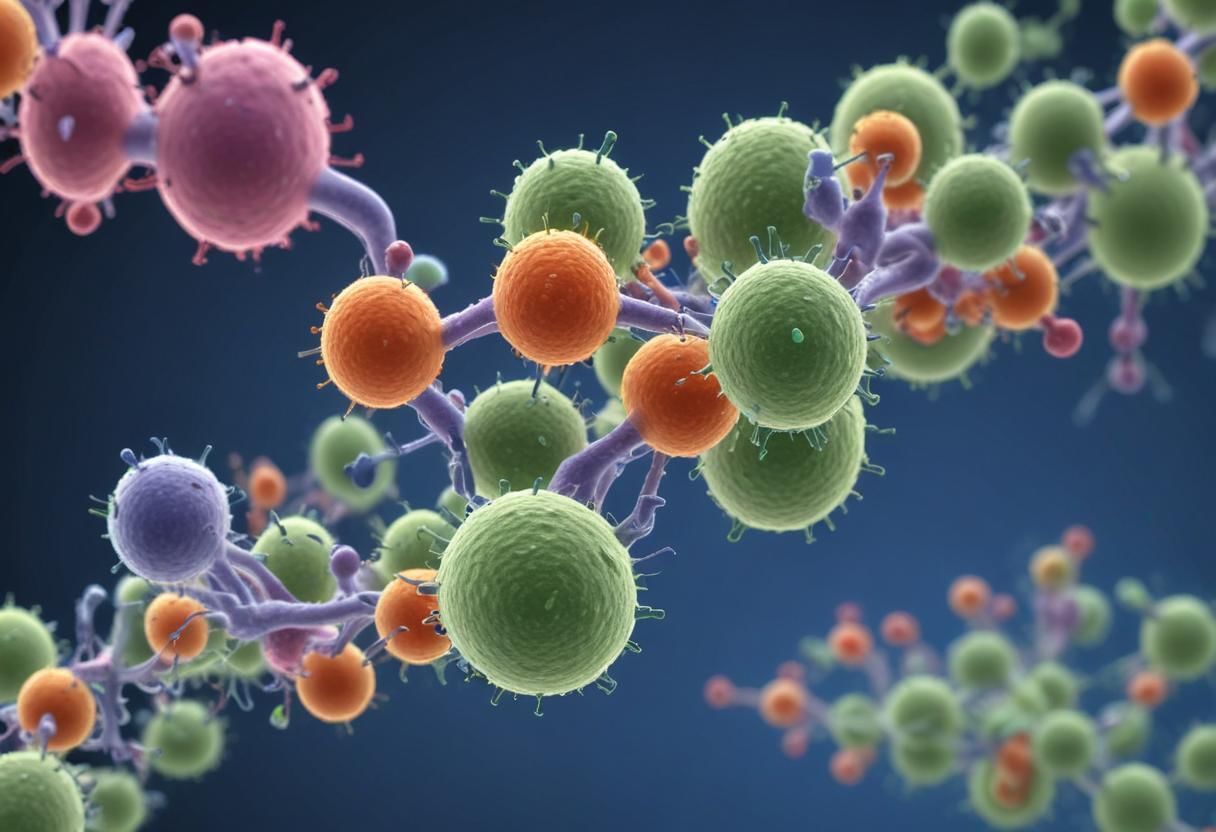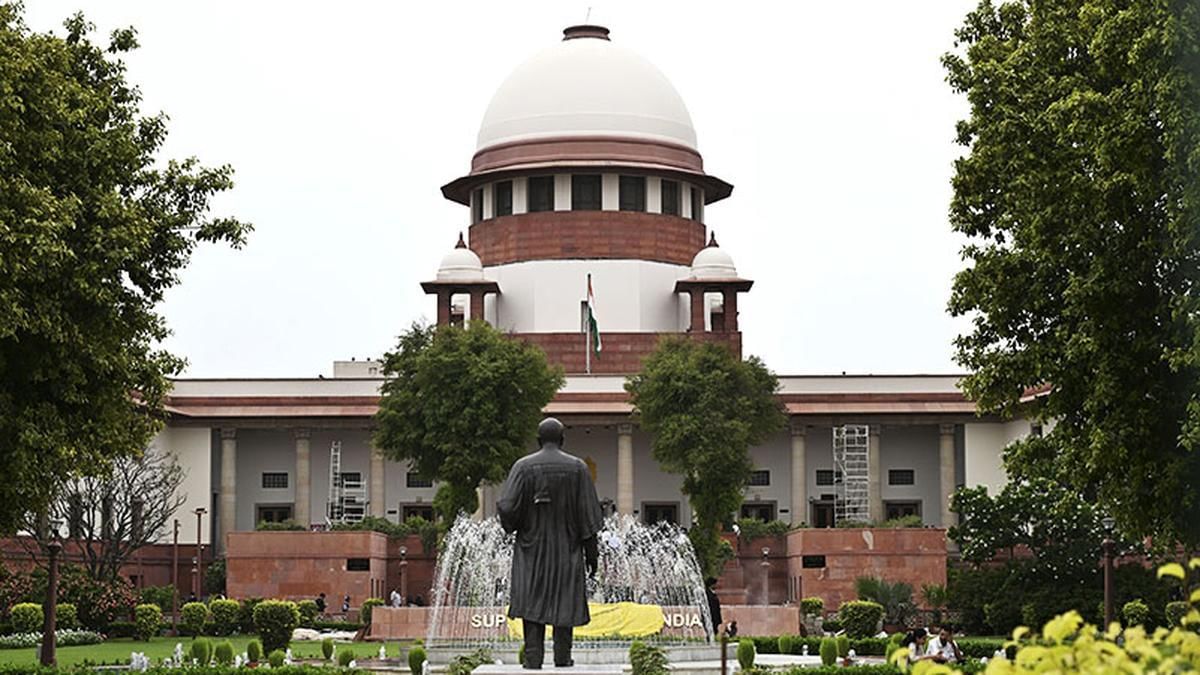UPSC Daily Current Affairs: 30 July 2024 | Current Affairs & Hindu Analysis: Daily, Weekly & Monthly PDF Download
GS-III/Science and Technology
Teaching computers to forget
Source: The Hindu
Why in news?
The emergence of artificial intelligence has transformed various aspects of our lives, leading to a reassessment of our notions regarding the mind, brain, and consciousness.
Antithesis of Machine Learning (ML):
Machine Unlearning (MUL) is viewed as the opposite of Machine Learning. Initially introduced by Cao and Yang in their work titled "Towards Making Systems Forget with Machine Unlearning," MUL focuses on enabling AI models to unlearn specific information they have acquired.
Key Aspects:
- Machine Learning (ML) vs. Machine Unlearning (MUL): While ML emphasizes learning from data to make informed predictions or decisions, MUL aims to reverse this process by enabling the effective erasure of certain data from models.
- Significance of Machine Unlearning: MUL is vital for maintaining data privacy, minimizing AI bias, and adhering to regulations mandating the deletion of sensitive information.
Implementation approaches
Two primary approaches to implementing Machine Unlearning include:
Private Approach:
- Data fiduciaries can voluntarily adopt MUL algorithms, offering flexibility but potentially restricting access for smaller enterprises due to cost and expertise constraints.
Public Approach:
- Governments can enforce MUL implementation requirements, potentially establishing a standardized framework that data fiduciaries must adhere to. This may involve guidelines within existing data protection laws, as demonstrated by the EU's AI Act.
International Approach:
- Emphasizes the necessity of a global MUL framework, recognizing the cross-border implications of AI advancements. International standard-setting organizations could play a pivotal role in developing these standards.
Techniques for Machine Unlearning
Various techniques are employed for Machine Unlearning, including:
Exact Unlearning:
- This method completely eradicates the influence of specific data points from the model.
Approximate Unlearning:
- Instead of entirely removing data influence, this technique minimizes its impact on the model's predictions to an acceptable level.
Data-Centric Approaches:
- Techniques like data reorganization and pruning are utilized to manage datasets, facilitating the identification and elimination of unwanted data points.
Model-Centric Approaches:
- These methods involve directly manipulating model parameters. For instance, algorithms can adjust weights linked to data points that require forgetting, reducing their impact on model outputs.
Prompting-Based Methods:
- In large language models (LLMs), developers can utilize tailored prompts to induce behaviors resembling unlearning.
Algorithmic Innovations:
- New algorithms like MU-Mis concentrate on minimizing the contribution of specific data points to the model's decision-making process.
Way forward:
To advance Machine Unlearning, the following steps are recommended:
Development of Standardized Frameworks:
- Establishing a comprehensive regulatory framework for MUL can promote its adoption across various sectors. Collaboration between governments and international bodies is crucial for creating guidelines mandating MUL techniques for data privacy compliance, akin to the EU's AI Act.
Investment in Research and Education:
- Increased funding and resource allocation toward research on machine unlearning techniques and their practical applications is necessary for progress in this field.
GS3/Defence & Security
In 2024, newer districts are affected by militancy in Jammu
Source: The Hindu
Why in news?
An ambush resulted in the deaths of five Indian Army personnel which highlights a worrying trend of increasing violence in Jammu and Kashmir, particularly in the Jammu region. This incident marks the fourth terror attack in the state within a span of 48 hours, indicating a surge in militant activities.
Observations on Militancy Leading to Civilian Deaths
- The new wave of terrorism: The region has seen a resurgence of violence after a period of relative peace, with notable incidents such as the June 9 attack on a bus carrying Hindu pilgrims, resulting in nine deaths. This shift in militancy is particularly concerning as it reflects a new wave of terrorism, especially in areas like Rajouri and Poonch, which had previously been stable.
- Changing dynamics of Terrorism: There is a notable transition from foreign terrorists leading attacks to local militants becoming more prominent.
- Surge in Violence Post-2016: The killing of Hizbul Mujahideen militant Burhan Wani in July 2016 sparked widespread unrest and violence, leading to a resurgence in militant activities. This period saw increased recruitment of local youth into militant ranks, particularly within groups like Lashkar-e-Taiba and Jaish-e-Mohammed.
- Major Attacks: Notable incidents include the 2016 Uri attack, where militants killed 19 soldiers, and the 2019 Pulwama attack resulted in the deaths of 40 CRPF personnel. These attacks highlighted the persistent threat posed by organized militant groups.
- Revocation of Article 370: The abrogation of Jammu and Kashmir's special status in August 2019 led to a significant shift in the political landscape. While the Indian government claimed a reduction in violence, there were still notable attacks.
- Emergence of Hybrid Militancy: A new trend termed "hybrid militancy" has emerged, where individuals engage in militant activities sporadically while maintaining their civilian lives.
- Decline in Active Militants: By the end of 2022, the number of active militants had fallen to just over 100, down from around 250 in 2019. However, the presence of foreign militants has reportedly increased, indicating a shift in the composition of militant forces.
- Increased Counter-Insurgency Operations: The Indian security forces have intensified operations against militants, resulting in the deaths of approximately 750 militants over the last four years, with a significant proportion being local youths.
- Changing Tactics and Technology: Militants have increasingly utilized modern technology, including drones and social media, to coordinate attacks and recruit members, presenting new challenges for security forces.
Way forward
- Addressing Recruitment Cycles: Government need to make initiatives aimed at preventing youth recruitment into militant groups. This can include educational programs, vocational training, and employment opportunities that provide alternatives to joining militant organizations.
- Enhanced Intelligence and Local Engagement: The need to strengthen local intelligence networks is crucial to preemptively identify and disrupt militant activities.
Mains PYQ
Analyse the complexity and intensity of terrorism, its causes, linkages and obnoxious nexus. Also suggest measures required to be taken to eradicate the menace of terrorism. (2021)
GS3/Economy
Report on Currency and Finance (RCF) 2023-24
Source: Indian Express
Why in news?
The Reserve Bank of India (RBI) released the Report on Currency and Finance (RCF) for the year 2023-24 with the theme - India's Digital Revolution.
India's Digital Revolution - Highlights of the RCF
- India is a global leader in the digital revolution, driven by robust digital public infrastructure, evolving institutional arrangements, and a tech-savvy population.
- India excels in biometric identification, real-time payments, telecom subscribers, and fostering a strong startup ecosystem.
- The Unified Payments Interface (UPI) has transformed retail payments, offering speed and convenience.
- The RBI is pioneering digital currency with initiatives like the e-rupee, a central bank digital currency (CBDC).
- The digital lending sector is flourishing with platforms like the Open Credit Enablement Network and collaborations between FinTechs and financial institutions.
Significance of Digitalization in Finance in India
- Driving next-gen banking with online payments and innovative credit assessment models.
- Enhancing financial markets by improving access, targeting beneficiaries efficiently, and boosting e-commerce through embedded finance.
- Digitization is spurring growth in India's services exports and reducing remittance costs.
- Transforming DPI into a global public good through initiatives like Project Nexus for cross-border payments.
Challenges Posed by Digitalization in Finance
- Challenges include cybersecurity, data privacy, bias, and risks associated with complex business models.
- New technologies may introduce risks like fraudulent apps and mis-selling.
- Digitalization requires investments in upskilling to address human resource challenges.
Remittances in India - Highlights of the RCF
- India leads in global remittances, with a significant share of total remittance inflows.
- Digitalization has reduced the costs associated with sending remittances globally.
- Inward remittances are substantial from the Gulf countries, contributing to India's GDP and external sector strength.
- Future projections suggest a rise in remittances driven by India's growing workforce.
Way Forward for a Robust Digital Finance Ecosystem in India
- Regulatory frameworks need to evolve to ensure financial stability, customer protection, and competition.
- The Digital Personal Data Protection (DPDP) Act 2023 aims to safeguard personal data in the digital realm while fostering innovation.
GS3/Enviro & Biodiversity
Landslides in Wayanad kills 50
Source: Mint
Why in news?
Over 50 people have died, and hundreds are feared trapped after three landslides hit Kerala's Wayanad district.
About Wayanad
- Wayanad is the only plateau in Kerala, forming a continuation of the Mysore Plateau, part of the Deccan Plateau.
- The Kabini River, a tributary of the Kaveri River, originates in Wayanad.
- Chaliyar River, the fourth longest river in Kerala, also originates on the Wayanad plateau.
- Wayanad is home to the Wayanad Wildlife Sanctuary.
Susceptibility to Landslides
- The region predominantly has laterite soil, which is highly prone to erosion.
- The steep and undulating terrain of Wayanad makes it naturally susceptible to landslides.
- Wayanad receives intense and prolonged monsoon rains that cause water infiltration, leading to soil saturation and increased pore water pressure, which destabilizes slopes.
- Large-scale deforestation for agriculture and settlement reduces the binding capacity of the soil and its ability to absorb water, exacerbating the risk of landslides.
What are Landslides?
- A landslide is the downward and outward movement of materials including rock, earth, or debris down a slope due to gravitational force.
- Landslides are disasters of hydrogeological origin, resulting from the failure of materials falling down a slope due to gravity.
India's Landslide Vulnerability
- India is among the top five landslide-prone countries globally, with at least one death per 100 sq km reported annually due to landslides.
- Rainfall variability is the single biggest cause of landslides, particularly in the Himalayas and the Western Ghats.
- Approximately 12.6% of India's geographical land area, excluding snow-covered areas, is prone to landslides.
Regional Distribution
- North-western Himalayas: 66.5% of landslides.
- North-eastern Himalayas: 18.8% of landslides.
- Western Ghats: 14.7% of landslides.
Key Policy Initiative: National Landslide Susceptibility Map
- The National Remote Sensing Centre (NRSC) under ISRO released the Landslide Atlas of India in 2023.
- This detailed guide identifies landslide hotspots across the country with a 100 sq. m resolution overview of landslide susceptibility.
- Scientists conducted a risk assessment based on 80,000 landslides recorded between 1998 and 2022 across 147 districts in 17 states and two Union Territories, creating a map of the country.
Key Highlights of the Landslide Atlas:
- Top States by Landslide Events
- Mizoram: 12,385 events in the past 25 years.
- Uttarakhand: 11,219 events.
- Other states: Kerala, Jammu and Kashmir, Nagaland, Arunachal Pradesh, and Tripura.
- Districts with Maximum Landslide Exposure
- Arunachal Pradesh: 16 districts.
- Kerala: 14 districts.
- Uttarakhand and Jammu and Kashmir: 13 districts each.
- Himachal Pradesh, Assam, and Maharashtra: 11 districts each.
- Mizoram: 8 districts.
- Nagaland: 7 districts.
- Highest Landslide Density and Risk Exposure
- Rudraprayag and Tehri Garhwal districts in Uttarakhand.
PYQ
[2021] Describe the various causes and the effects of landslides. Mention the important components of the National Landslide Risk Management Strategy.
GS3/Science and Technology
What is FnCas9 Enzyme?
Source: Mint

Why in news?
Scientists from the CSIR-Institute of Genomics and Integrative Biology have developed an enhanced genome-editing system using FnCas9 that can modify DNA more precisely and more efficiently than existing CRISPR-based technologies.CRISPR occurs naturally in some bacteria as a part of their immune system that limits infections by recognizing and destroying viral DNA.
What is F nCas9?
- FnCas9 is a variant of the Cas9 enzyme derived from the bacterium Francisella novicida. It is used in genome editing technologies, particularly within the CRISPR system, to make precise modifications to DNA sequences.
What is CRISPR-Cas9 System?
- CRISPR-Cas9 is a revolutionary genome-editing tool adapted from a natural bacterial defense mechanism against viruses.
- Bacteria use CRISPR sequences to store segments of viral DNA, helping them recognize and combat viruses in subsequent infections.
Mechanism:
- Guide RNA (gRNA): A specifically designed RNA molecule that matches the target DNA sequence. Acts as molecular scissors that cut DNA at a location specified by the gRNA.
- Proto-spacer Adjacent Motif (PAM): A short DNA sequence adjacent to the target site that Cas9 must recognize and bind to in order to cut the DNA.
- DNA Repair: Once the DNA is cut, the cell’s natural repair mechanisms either repair the break or introduce desired genetic changes.
Applications:
- Agriculture: Enhancing crop yield and nutritional value.
- Healthcare: Diagnosing and treating genetic disorders.
- Research: Studying gene functions and interactions.
Challenges with Traditional Cas9:
- SpCas9 can sometimes cut DNA at unintended sites, leading to potential unintended genetic modifications.
How FnCas9 overpowers traditional Cas9 (SpCas9)?
- FnCas9 is known for its higher specificity in targeting DNA sequences compared to SpCas9, resulting in fewer off-target effects.
- More accurate targeting reduces unintended genetic modifications, ensuring more reliable and safer genome editing.
Achievements by Indian Scientists
- Scientists at the CSIR-IGIB in New Delhi have modified FnCas9 to enhance its efficiency without compromising specificity.
Key Modifications include:
- Amino Acid Tinkering: Researchers modified amino acids in FnCas9 that interact with the PAM sequence to increase binding affinity.
- Improved Binding: Enhanced binding affinity allows FnCas9 to sit more securely on the DNA, improving gene-editing effectiveness.
- Flexibility: The enhanced FnCas9 can access and edit hard-to-reach regions of the genome.
Experimental Results:
- Enhanced FnCas9 cuts target DNA at a higher rate than the unmodified version.
- Improved ability to detect single-nucleotide changes in the genome, broadening its diagnostic and therapeutic applications.
GS2/International Relations
Delhi joins Quad on Ukraine war
Source: Indian Express Why in news?
Why in news?
Quad Ministerial Meeting was held recently in Tokyo. After the meeting, External Affairs Minister S. Jaishankar, US Secretary of State Antony Blinken, Australian Foreign Minister Penny Wong, and Japanese Foreign Minister Yoko Kamikawa released a joint statement. They expressed their enthusiasm for the upcoming Quad summit in India, highlighting the importance of the summit in strengthening their collaborative efforts. The ministers reiterated their commitment to advancing a free, open, and inclusive Indo-Pacific region and emphasized the importance of their partnership in addressing regional and global challenges. The joint statement underscored the shared values and strategic interests of the Quad nations.
Key highlights of the Quad Ministerial Meeting
About
The grouping of four democracies – India, Australia, US and Japan – is known as the quadrilateral security dialogue or quad. The aim of this grouping is to ensure a free and open international order based on the rule of law in the Indo-Pacific.
Objectives
The group’s primary objectives include:
- Maritime security
- Combating the Covid-19 crisis, especially vis-à-vis vaccine diplomacy
- Addressing the risks of climate change
- Creating an ecosystem for investment in the region and boosting technological innovation
Evolution of Quad
- Following the Indian Ocean tsunami, India, Japan, Australia, and the US created an informal alliance to collaborate on disaster relief efforts.
- Quad as a formal group was first mooted by Japanese Prime Minister Shinzo Abe in 2007.
- However, due to Chinese resistance and reluctance shown by India, it could not move ahead.
- Later, during the 2017 ASEAN Summits, all four former members re-joined negotiations to revive the quadrilateral alliance.
- The Quad was upgraded to the ministerial level in September 2019.
- In March 2021, the first-ever summit of QUAD leaders took place virtually.
- It was participated by the PMs/Presidents of all the member countries.
- The summit was hosted by US.
- Later, in September 2021, the first in-person meeting of Quad leaders was hosted by the US.
Divergences between India and the remaining Quad members
- Divergences between India and the remaining Quad members US, Japan, and Australia over Russia and bilateral differences over the Pannun assassination plot have cast a shadow on the grouping.
- With Beijing as the principal challenge, Quad is trying to paper over the differences and make a case for cooperation.
India to host Quad Leaders’ Summit in 2024
- Ministers reaffirmed that India will host Quad Leaders’ Summit in 2024 and USA will host the next Quad Foreign Ministers’ Meeting in 2025.
On Ukraine War
- The participating leaders expressed their deepest concern over the war raging in Ukraine, and flagged respect for sovereignty and territorial integrity. This was a clear reference to Russian invasion of Ukraine. Significantly, this formulation of respect for sovereignty and territorial integrity is not used by India in its national statements on the Russia-Ukraine war. The negative impacts of the war in Ukraine with regard to global food and energy security, especially for developing and least developed countries, was also highlighted.
Free and open Indo-Pacific
- The Quad leaders reaffirmed its steadfast commitment to a free and open Indo-Pacific. They vowed to work towards a region where no country dominates others and each state is free from coercion in all its forms. This was a veiled reference to China’s aggressive behaviour in the region.
Achievements of Quad highlighted
Leaders also listed the outcomes from the Quad meeting including:
- The Indo-Pacific Maritime Domain Awareness initiative that links information fusion centres
- The Open-RAN (Radio Access Network) deployed in Palau
- A space-based climate warning system to be launched in Mauritius
- Off-grid solar projects in the Indo-Pacific
GS2/International Relations
Centre likely to Lodge Complaint against ILO’s India Employment Report
Source: The Hindu Why in News?
Why in News?
India, a founding member of the International Labour Organization (ILO), is likely to raise a complaint against the UN agency over its India Employment Report 2024, released in March this year.
About International Labour Organisation:
- The ILO was created in 1919, as part of the Treaty of Versailles that ended World War I, to reflect the belief that universal and lasting peace can be accomplished only if it’s based on social justice.
- In 1946, the ILO became a specialized agency of the United Nations.
- The ILO is devoted to promoting social justice and internationally recognized human and labour rights, pursuing its founding mission that labour peace is essential to prosperity.
Headquarters:
Geneva, Switzerland
Objectives of ILO:
- Promote and realize standards and fundamental principles and rights at work
- Create greater opportunities for women and men to decent employment and income
- Enhance the coverage and effectiveness of social protection for all
- Strengthen tripartism and social dialogue
Membership of ILO: 187 state members.
India is a founding member of the ILO and it has been a permanent member of the ILO Governing Body since 1922. The ILO constitution permits any member of the UN to become a member of the ILO. To gain membership, a nation must inform the director-general that it accepts all the obligations of the ILO constitution.
About India Employment Report 2024:
- The India Employment Report 2024 is the third in the series of regular publications by the Institute for Human Development on labour and employment issues.
- It is undertaken in partnership with the ILO.
- The report examines the challenge of youth employment in the context of the emerging economic, labour market, educational, and skills scenarios in India and the changes witnessed over the past two decades.
- The report highlights recent trends in the Indian labour market, which indicate improvements in some outcomes along with persisting and new challenges, including those generated by the COVID-19 pandemic.
Key Highlights of the India Employment Report 2024:
- The report is primarily based on analysis of data from the National Sample Surveys and the Periodic Labour Force Surveys between 2000 and 2022
- Employment Trends & Current Scenario
- Challenges of Youth Employment
- Suggestions
Centre likely to Lodge Complaint against ILO’s India Employment Report:
- The Indian government plans to lodge a complaint against the International Labour Organization (ILO) over its India Employment Report 2024.
- Union Labour Ministry official criticized the ILO's model as unsuitable for India, stating that India's own assessments and data provide a more accurate picture.
- The ILO report, prepared with the Institute of Human Development, highlighted that 83% of India's unemployed are youth, with a significant increase in the share of educated young people among the unemployed.
- The Labour Ministry has expressed concerns over the ILO's data sources and emphasized the importance of employment generation and improving employability through government initiatives.
GS3/Enviro & Biodiversity
Species in news: Charles Darwin’s Frog
Source: The Hindu
Why in news?
The Charles Darwin frog, a species native to the Andaman Islands, is exhibiting unusual mating and egg-laying behaviors.
About Charles Darwin’s Frog
- Scientific Name: Minervarya charlesdarwini
- Endemic to the Andaman Islands
- Named after Charles Darwin
- Family: Dicroglossidae
- Belongs to a large group of Asian frogs with over 220 species
- Currently listed as VULNERABLE on the IUCN Red List
Study and Findings
- Engages in upside-down mating and egg-laying behavior
- Increasingly uses artificial objects like plastic sapling bags and discarded containers as breeding sites
- Adapting to habitat loss and fragmentation by responding to rapidly changing environments
PYQ
With reference to India’s biodiversity, Ceylon frogmouth, Coppersmith barbet, Gray-chinned minivet, and White-throated redstart are:
(a) Birds
(b) Primates
(c) Reptiles
(d) Amphibians
GS3/Defence & Security
Target drug producers, not users
Source: The Hindu Why in news?
Why in news?
Telangana faces a drug crisis, with Hyderabad as a transit hub. Marijuana is trafficked via Konark Express to Maharashtra and Karnataka, per police reports.
The Gravity of the Drug Problem in Telangana
- Hyderabad has emerged as a transit hub for drugs, with marijuana being ferried through the city to be supplied to neighbouring states like Maharashtra and Karnataka.
- The number of people charge-sheeted for drug possession and peddling increased from 735 in 2020 to 3,052 in 2022.
- In the first six months of 2023, nearly 1,900 cases were lodged against peddlers and users.
- An international drug ring was busted in February 2023, seizing ₹8 crore worth of synthetic psychedelics like OG Kush and Ecstasy pills.
- Drug abuse has been found among students in top medical and management colleges in Hyderabad.
Initiatives taken by the State Government
Drug Detection Kits:
- Officials use the latest technology, including 12-panel drug tests, to instantly identify drug abuse among party attendees and students.
Special Operations:
- Operations such as checking attendees at Electronic Dance Music parties and conducting tests on students in colleges have been carried out.
Use of Sniffer Dogs:
- Sniffer dogs are deployed in pubs and transit hubs to detect contraband.
Legal and Technological Actions:
- The Telangana Anti-Narcotics Bureau sent cease and desist notices to firms manufacturing ganja-laced chocolates shipped via e-commerce platforms.
Political Will:
- Chief Minister A. Revanth Reddy has shown political will by advocating for awareness among politicians and celebrities, although this has led to legal disputes.
Legal Status of Marijuana
- General Prohibition: Marijuana, including its various forms such as ganja (flower), charas (resin), and hashish, is illegal under the NDPS Act. Possession, sale, and production of these substances are criminal offences.
- Bhang Exception: Bhang, made from the leaves and seeds of the cannabis plant, is legally consumed in many parts of India, especially during religious festivals. It is not classified as an illegal substance under the law.
- State Variations: Different states have their own regulations regarding cannabis. For example, Uttarakhand legalized the commercial cultivation of hemp, while Odisha has a more lenient approach to recreational use. This leads to a patchwork of laws across the country.
- Penalties: The NDPS Act prescribes severe penalties for drug offences. Possession of small quantities can lead to imprisonment of six months to one year and fines of up to ₹10,000. For larger quantities, penalties can escalate to 10-20 years of imprisonment and fines of ₹1-2 lakh.
Requires Smart thinking and Policing (Way forward)
- Focus on Trade, Not Users: The emphasis should be on dismantling the drug network rather than just catching users.
- Avoiding Witch Hunts: The fight against drugs should not lead to the targeting of specific localities or public shaming of institutions.
- Need Economic Considerations: Measures such as shutting down nightlife venues before midnight could harm the economy and the business environment.
- Implement Integrated Approach: A comprehensive strategy is needed that involves smarter policing, better use of technology, and effective legal actions against producers and suppliers rather than users.
Mains PYQ:
India’s proximity to two of the world’s biggest illicit opium-growing states has enhanced her internal security concerns. Explain the linkages between drug trafficking and other illicit activities such as gunrunning, money laundering, and human trafficking. What countermeasures should be taken to prevent the same? (2018)
GS3/Science and Technology
What is Oropouche Fever?
Source: India TV
Why in news?
Brazil has reported the first deaths from Oropouche fever.
About Oropouche Fever
Oropouche fever is a viral disease caused by the Oropouche virus. The virus is transmitted primarily through the bites of infected midges, specifically the Culicoides paraensis, and mosquitoes. The World Health Organization (WHO) reported the first-ever outbreak in Cuba on June 11, 2024.
Symptoms:
- Symptoms are similar to those of dengue fever and typically begin between four to eight days after the bite.
- Common symptoms include:
- Sudden onset of fever
- Headaches
- Body aches
- Chills
- Joint stiffness
- Nausea and vomiting (occasionally)
- Most patients recover within seven days, and severe cases are rare. There is no evidence of human-to-human transmission.
Treatment and Prevention
- There is no specific vaccine or antiviral treatment for Oropouche fever. Treatment is usually symptomatic, focusing on relieving fever and pain.
- Preventative measures include avoiding bites from midges by using repellents, wearing protective clothing, and using insect nets.
GS3/Defence & Security
DAC approves amendment to MQ-9B UAV deal with US
Source: The Hindu
Why in news?
The Defence Acquisition Council (DAC) has reviewed and approved amendments to the deal for 31 MQ-9B High Altitude Long Endurance (HALE) Unmanned Aerial Vehicles (UAVs) from General Atomics of the US. The DAC also approved a proposal for the scheduled refit of aircraft carrier INS Vikramaditya later this year.
About MQ-9B HALE UAV
- The MQ-9B drone is a version of the MQ-9 "Reaper" and has two models - Sky Guardian and Sea Guardian.
- It is built by General Atomics.
- This drone can fly over 40,000 feet high, making it useful for watching the Himalayan border areas.
- It can stay in the air for up to 40 hours, perfect for long surveillance missions.
- The MQ-9B has advanced features like automatic take-off and landing, a system to avoid other objects, secure GPS, and encrypted communications.
- It can offer 80% of a manned aircraft's capabilities at 20% of the cost per hour.
Deployment
The MQ-9B drones are planned to be deployed at four places, including INS Rajaji near Chennai, Porbandar in Gujarat by the Indian Navy. The other two services will keep them jointly at two bases in Sarsawa and Gorakhpur in Uttar Pradesh at Air Force bases due to long runway requirements.
Specifications of the Procurement
India is looking to procure 31 MQ-9B UAVs - 15 Sea Guardians for the Indian Navy and 16 Sky Guardians (eight each for the Indian Army and Air Force). The country has also leased two MQ-9As, with the maiden flight taking place on November 21, 2020. The estimated cost is $3.99 billion. As part of the deal, General Atomics will establish a Global Maintenance, Repair, and Overhaul (MRO) facility in India, contributing to offset obligations.
Significance of the deal
The SeaGuardian model can help the Navy patrol large areas more economically than manned aircraft. For the Army and Air Force, these drones will help monitor movements along the borders, especially with China.
GS2/Polity
Supreme Court begins week-long special Lok Adalat drive
Source: The Hindu
Why in news?
The Supreme Court of India has initiated a special Lok Adalat drive as part of its 75th anniversary celebrations. The court's first seven Benches, including a five-member Bench led by Chief Justice D.Y. Chandrachud, have converted into Lok Adalats from 2 p.m. onwards to resolve long-pending disputes amicably. These Lok Adalats are addressing various cases such as matrimonial disputes, property disputes, motor accident claims, land acquisition, compensation, service and labor disputes, with the objective of expediting case resolutions. This effort will continue until August 3.
About Lok Adalat
Background:
- The National Legal Services Authority (NALSA) operates under the Legal Services Authorities Act, 1987, with the Chief Justice of India serving as the Patron-in-Chief of NALSA.
Objective:
- Providing free legal services to disadvantaged segments of society.
- Organizing Lok Adalats for amicable dispute settlement.
- Statutory status under the Legal Services Authorities Act, 1987.
Organization of Lok Adalat:
- Lok Adalats are organized at various intervals and locations by State/District Authorities, High Court Legal Services Committees, or Tehsil Legal Services Committees.
Composition:
- Includes serving or retired judicial officers and other designated individuals.
- Members of the Lok Adalats serve as statutory conciliators.
Role of Members:
- Act as statutory conciliators, facilitating settlements through persuasion and mutual agreement.
Types of Cases:
- Includes land title cases, criminal offenses, family disputes, land acquisition disputes, and more.
- However, non-compoundable offenses are beyond Lok Adalat’s jurisdiction.
Powers:
- Lok Adalats have jurisdiction to resolve disputes pending before courts or at the pre-litigation stage.
- Decisions made by Lok Adalats are considered as decrees of civil courts.
- Decisions are final and binding, with no appeal process against them.
Court Fee:
- No court fee is required for matters brought before Lok Adalats.
- Refunds are provided for court fees paid if cases are settled through Lok Adalats.
Difference from Law Courts:
- Lok Adalat serves as a forum for resolving disputes outside traditional court settings.
- It encourages equitable resolutions through dialogue and mutual agreement.
|
38 videos|5293 docs|1118 tests
|
FAQs on UPSC Daily Current Affairs: 30 July 2024 - Current Affairs & Hindu Analysis: Daily, Weekly & Monthly
| 1. What is the significance of teaching computers to forget in relation to current advancements in technology? |  |
| 2. How is the FnCas9 Enzyme relevant in the field of biotechnology and genetic engineering? |  |
| 3. What are the key implications of Delhi joining the Quad in the context of the ongoing Ukraine war? |  |
| 4. What are the potential challenges that may arise from the Centre lodging a complaint against ILO's India Employment Report? |  |
| 5. How does the outbreak of Oropouche Fever impact public health and what measures can be taken to prevent its spread? |  |
















